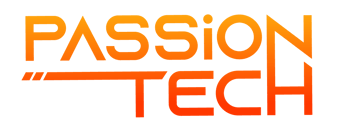Like most other industries, the automotive sector's suppliers and manufacturers are closely monitoring inflation and the Fed's interest rate decisions as the industry's production conditions continue to be characterized by labor shortages, unpredictable supply chains, and high consumer demand. Opportunities will continue to exist for numerous automotive manufacturers and suppliers that align themselves with the electrified future of the industry, despite the fact that inflation is now at its highest level in more than 40 years and borrowing rates are rising.
Businesses must significantly alter their business strategies in order to take advantage of such opportunities. Changes could involve selling off a portion of their company while also seeking strategic alliances and collaborations centered on the development of electric car technologies. For companies that provide components or technologies that can be utilized with internal combustion engines and/or EVs, it will be crucial to keep investing in automation, procurement review, and supply chain review projects that are efficiency-focused.
Suppliers have been affected by price increases in the past year for everything from semiconductors to aluminum and steel. These and other growing input costs, such as those for energy, labor, and shipping, are making it harder for suppliers to create parts and limiting or undermining margin increases. While production costs for assembled vehicles have gone up overall for the same reasons, original equipment makers have benefited from a booming market.
The auto industry is skilled at responding to such changes and could easily reinstate incentives when necessary, or offer longer financing terms. On the demand side of the equation, while many might anticipate that increased vehicle financing costs would immediately impact car buyers and slow down the demand, this is not always the case. As the industry transitions to more expensive electric vehicles that will have more cutting-edge technologies and more expensive commodities, the trend of rising vehicle prices will continue. According to a June AutoNews study, the typical new automobile recently sold for roughly $42,000, or $1,000 more than the sticker price.
The average price for luxury brands was $64,000, or $1100 more than the suggested retail price. Despite current inflation rates, these price increases do not provide a barrier to ongoing demand. Americans had accumulated roughly $2.5 trillion in surplus savings by the end of July due to the COVID-19 issue, and households are further supported by a solid labor market and healthy consumer expenditure. While the households in the bottom two quartiles struggle to buy new automobiles and may choose to buy used cars in the future, a greater segment of customers will still buy new cars. Strong sales volumes should therefore persist for the foreseeable future, allowing manufacturers' capital expenditures and suppliers' operating cash flows to support older technologies while also permitting investment in EV technologies that are geared toward the future.
This is the ideal time to make strategic choices, investments, mergers and acquisitions, and prospective M&A related to new EV technologies for suppliers that are largely dependent on internal combustion engines. When faced with the necessity to reinvent their operations, suppliers might better grasp how to succeed by studying the past of those clients. An OEM, for example, hired a new CEO to change the culture of the business and prevent bankruptcy. To do this, the CEO mortgaged every asset of the company in order to secure the funding required for a reorganization.
Some related products which provide DIV design such as:
(1) Zinc Alloy-Electroplating / Plastic Spraying Powder-Fish License Plate Frame
(2) Zinc Alloy-Electroplating / Plastic Spraying Powder-Bird License Plate Frame
(3) Zinc Alloy-Electroplating / Plastic Spraying Powder-Beauty License Plate Frame
Even though it is a very extreme example, it shows the extremes to which certain businesses may need to go in order to fully redefine themselves as manufacturers of the future, in line with the technologies that will have relevance and longevity within the sector, rather than simply survive. If an organization's vehicles are standardized, frequently make short journeys, and drive a lot every day, they might want to think about investing in their own electric vehicle charging infrastructure. Due to the unquestionably high initial setup costs, only huge firms with ample cash have so far opted to invest in such systems.
They should also invest in additional commercial EVs once the public charging infrastructure is adequately built to handle fleets that travel long distances and when middle-market enterprises begin purchasing these cars.
If you have any questions, please just contact us and leave your questions below.


